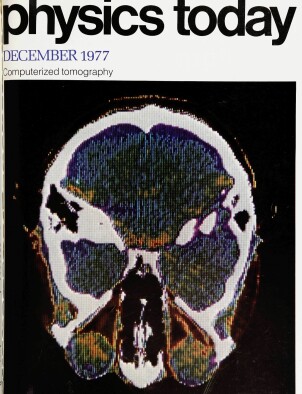Critical‐point universality and fluids
DOI: 10.1063/1.3037826
The similarity of critical behavior in dissimilar systems has long fascinated scientists. When Pierre Curie, in 1895, measured the magnetic equation of state of nickel, he was struck by how much the curves he obtained by plotting magnetization against temperature looked like the density–temperature isobars of carbon dioxide near the critical point. In 1907 Pierre Weiss fashioned his mean‐field theory describing the equation of state of nickel after Van der Waals’s equation for fluids.
This article is only available in PDF format
References
1. H. E. Stanley, Introduction to Phase Transitions and Critical Phenomena, Oxford, New York (1971).
2. Phase Transitions and Critical Phenomena (C. Domb, M. S. Green, eds.) volumes 1–6, Academic, New York (1972–1977).
3. J. C. Le Guillou, J. Zinn‐Justin, Phys. Rev. Lett. 39, 95 (1977); https://doi.org/PRLTAO
G. A. Baker, B. G. Nickel, D. I. Meiron, Phys. Rev. B, in press.4. M. S. Green, M. Vicentini‐Missoni, J. M. H. Levelt Sengers, Phys. Rev. Lett. 18, 1113 (1967); https://doi.org/PRLTAO
M. Vicentini‐Missoni, reference 2, volume 2, page 39 (1972).5. J. V. Sengers, J. M. H. Levelt Sengers, Progress in Liquid Physics (C. A. Croxton, ed.), Wiley, New York (1977), chapter 4.
6. L. P. Kadanoff, reference 2, volume 5A, page 1 (1976).
7. K. G. Wilson, J. Kogut, Physics Reports 12C, 75 (1974).
8. F. J. Wegner, reference 2, volume 6, page 7 (1976).
9. A. Aharony, reference 2, volume 6, page 357 (1976).
10. C. Domb, reference 2, volume 3, page 357 (1974).
11. J. Als‐Nielsen, reference 2, volume 5A, page 87 (1976).
12. L. J. de Jong, A. R. Miedema, Adv. in Physics 23, 1 (1974).https://doi.org/ADPHAH
13. M. E. Fisher, Rev. Mod. Phys. 46, 597 (1974).https://doi.org/RMPHAT
14. G. Ahlers, in The Physics of Liquid and Solid Helium, Part I (K. H. Bennemann, J. B. Ketterson, eds.), Wiley, New York (1976), page 85.
15. M. R. Moldover, R. J. Hocken, R. W. Gammon, J. V. Sengers, NBS Technical Note 925, US Government Printing Office, Washington, DC (1976).
16. W. T. Estler, R. J. Hocken, T. Charlton, L. R. Wilcox, Phys. Rev. A 12, 2118 (1975).https://doi.org/PLRAAN
17. R. J. Hocken, M. R. Moldover, Phys. Rev. Lett. 37, 29 (1976).https://doi.org/PRLTAO
18. L. M. Stacey, B. Pass, H. Y. Carr, Phys. Rev. Lett. 23, 1424 (1969).https://doi.org/PRLTAO
19. D. A. Balzarini, Can. J. Phys. 42, 499 (1974); https://doi.org/CJPHAD
D. A. Balzarini, K. Ohrn, Phys. Rev. Lett. 29, 840 (1972).https://doi.org/PRLTAO20. A. Stein, G. F. Allen, J. Phys. Chem. Ref. Data 2, 443 (1974).https://doi.org/JPCRBU
21. S. C. Greer, Phys. Rev. A 14, 1770 (1976).https://doi.org/PLRAAN
22. B. Chu, Ber. Bunsenges. Physik. Chemie 76, 202 (1972).https://doi.org/BBPCAX
23. R. F. Chang, H. Burstyn, J. V. Sengers, A. J. Bray, Phys. Rev. Lett. 37, 1481 (1976).https://doi.org/PRLTAO
24. B. I. Halperin, P. C. Hohenberg, Rev. Mod. Phys. 49, 435 (1977).https://doi.org/RMPHAT
More about the Authors
Anneke Levelt Sengers. US National Bureau of Standards.
Robert Hocken. US National Bureau of Standards.
Jan V. Sengers. University of Maryland, College Park.




